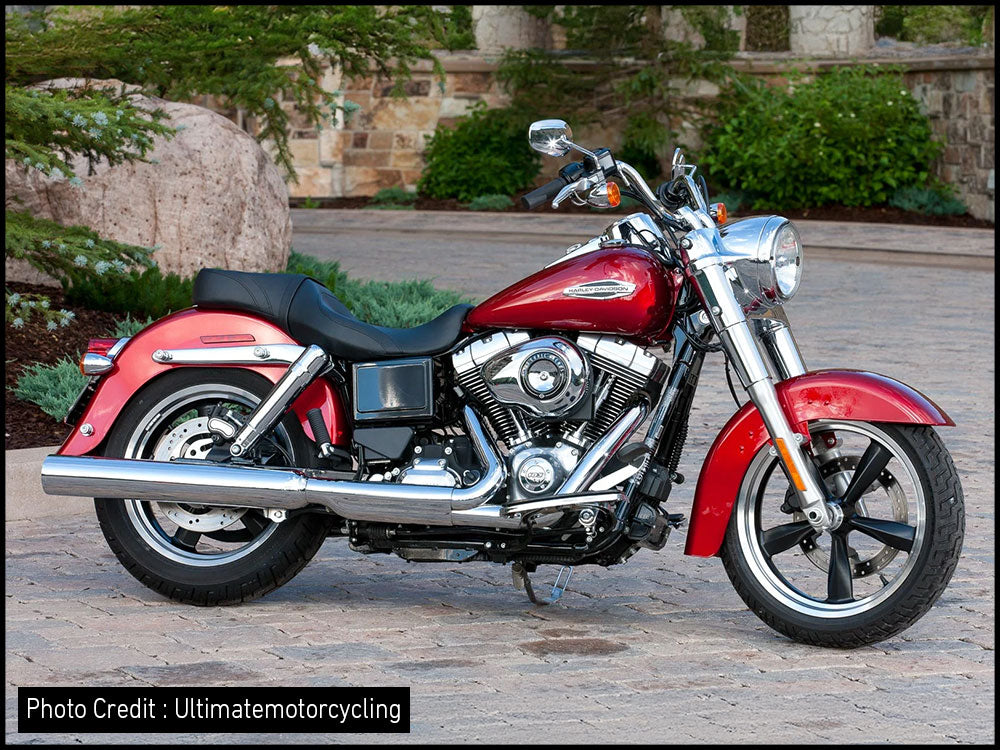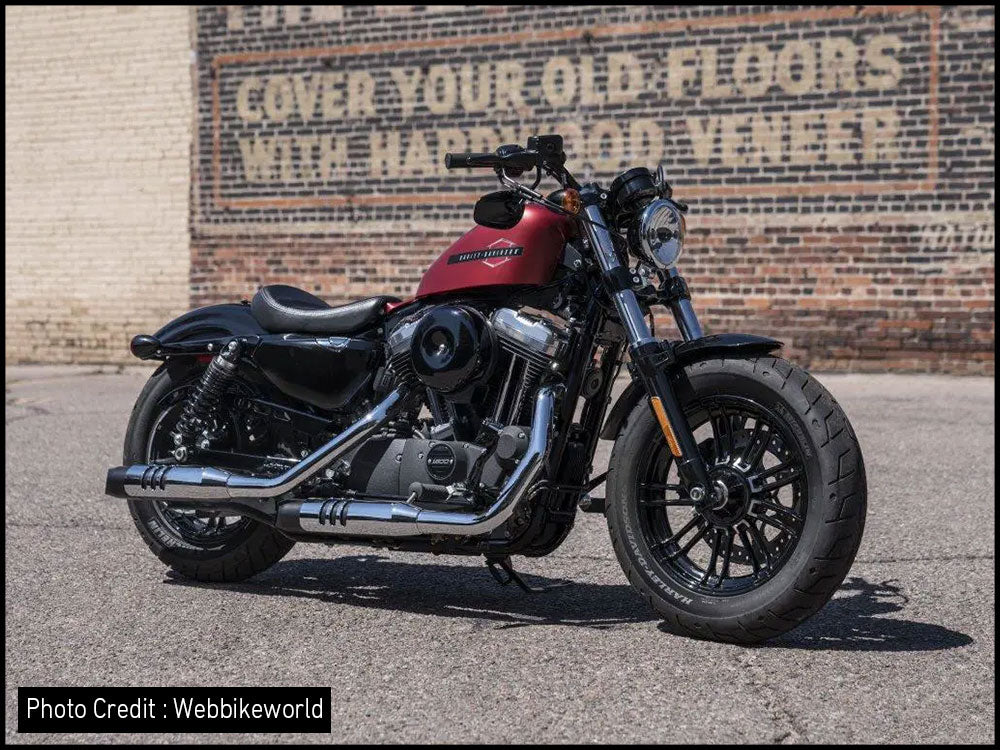Table of Content
There are many unrealistic and dispelling motorcycle myths that have nothing to do with any aspect of motorcycle riding. Then what is the reason these false rumors still exist? There can be multiple reasons but the most prominent one is the lack of knowledge. Most riders do not support high-speed revving or stunts because they think of them as a matter of danger. It is indeed an arduous act, but what if the rider is taking all the precautions and doing it with great expertise and statistically possible.
However, it is a good idea to understand the statistics whether you are riding a cruiser , street bike , cafe racer , or doing off-road stunts with your dirt bike. Always try to keep yourself safe as much as possible whatever you’re riding. You should do anything you can to increase the chances of avoiding accidents. No one wants to get hurt while riding a motorcycle.
Therefore, the adage "it’s not if, it’s when" regarding motorcycle crashes is one of the first urban myths we’ll get out of the way. Though, there is no need to add this to the list as it is a complete non-sense that everyone who has ridden a bike gets into an accident. Many people go their whole lives without a crash, not because they are lucky, but just because they are experienced, they have learned things properly, and most importantly, they take all the precautions to ride safely
When you hear these dispelling phrases called myths, you will believe them as they sound realistic, and it's not only you, other people also believe them. Well, we have listed down some of the most common motorcycle myths. In this article, we’ll be discussing them and will try to see the other side of the coin as well.
1. Helment Myths
1.1 Helmet with a Full Face Block Your Field of View or Hear Danger
We know talking about this is going to upset a few riders, but here at Viking Bags , we take our riders' safety extremely seriously, – which is why our myth busters decided to bust this myth first
Also Read: Viking Bags Motorcycle Fairings 101 Guide
According to the motorcycle laws , since 1997, every DOT-approved and the legal helmet has required a minimum of 210 degrees of visibility. The requirements are so strict that any helmet maker who fails to reach this criterion will face substantial fines.
Why is this important? According to research studies, the average maximum human field of peripheral vision is no greater than 180 degrees
In fact, the wind and debris protection from helmets actually serves to enhance your vision as you’re not constantly dodging bugs or wiping away high-wind tears. It allows the rider to hear better by reducing the wind noise. Helmets also help to relieve tiredness by reducing noise and wind pressure on the head
Combine that with the fact that you should have (a) two mirrors on your bike to help with peripheral vision and (b) you should be moving your head to check your blind spots whether you're wearing a helmet or not, and there's no reason to believe that a motorcycle helmet impedes safety, visual or otherwise.
1.2 Helmets Increase the Probability of Spinal Injuries
Another widespread myth among anti-helmet activists. This one was debunked over a decade ago, but it's still heard from anti-helmet law activists now and then
All politics aside, Johns Hopkins University published a study in 2011, that found riders wearing helmets were actually 22% less likely to suffer a spinal injury in the event of a crash. This myth has been debunked time and time again by dozens of peer-reviewed medical studies, but it persists in the riding community
If you don’t think a helmet should be mandatory, you’re welcome to state your case, but please: Don’t make it about motorcycle safety.
1.3 Helmets Do More Harmful than Beneficial
One unrealistic myth about helmets is that they do more harm than good-namely, though the increased weight of the helmet causes your head to move around, you are more likely to fracture your neck in an accident.
The reality is that most studies and statistics show that motorcyclists who wear helmets have a significantly lower risk of neck injury than those who do not wear helmets.
2. Tire Myths
2.1 Racing Tires are More Secure than Road Tires
Racing tires are made of different compounds and serve a respected purpose based on different properties, so they are completely different from road tires. They are meant to work best under extreme weather conditions to provide a strong grip, and they are designed to stick like glue after one heat cycle
Racing tires are great for working on dry surfaces or roads, but they can be a thorn in your throat when riding in the rain. Moreover, these tires have fewer grooves in comparison to street tires, so they are not good at channeling water out of their way
On the other hand, road tires or street tires will wear better, have more stability, and provide great wet-weather performance. Also, these tires have a better grip at normal temperatures, providing you with consistent performance over many heat cycles.
2.2 Racing Tires Will Make Your Motorcycle Faster on the Road
This is simply a bluff. Engine power is what matters, not the tires. However, tires play a critical role in making your bike a good performer, but not in this way. As mentioned above, motorcycle racing tires are very different than road tires
On the highway, it's rare to get a set of racing tires up to the optimum racing temperature. And there’s a better chance that after you set off on your bike, you are going to fall off at the first intersection. You should definitely stick to road tires for your bike when you are on the road, or any surface other than race track surfaces.
There's a reason road tires are intended for streets and highways, and racing tires are made for the track. Don’t mix and mingle.
2.3 Underinflated Tires
There is this insane concept that exists that a pair of new motorcycle tires have some kind of sleek layer of coating on them that can only be removed by riding them a few miles underinflated. Please do not believe this because you’ll end up hurting yourself.
Though most new motorcycle tires look like they have some kind of coating on them, that’s just because they are new and haven’t ridden even a mile yet. Never reduce the pressure on your tires to try and scrub them in!
However, riding on underinflated tires will damage the sidewall, cause them to flex, and could potentially cause a blowout, which you don’t want
2.4 Slicks Allow You to Go Faster
True... Unless you're racing. And you know how to use them, and the race track is dry, and your bike was sitting on correctly calibrated tire warmers until you left the pits.
Racing tires do not have public roadways, despite their cool appearance. To maintain grip, they need a lot of heat, and a lot of heat necessitates the presence of dirt, dust, or wetness. Are you certain you'll be able to find all of this on public roads?
Even in the quickest, driest, and cleanest canyons, a street-legal sport or hyper-sport tire will outperform a racing slick
If you're commuting, joyriding, or riding in severe weather, sport or sport-touring tires are the safest and best-performing tread compound for your bike.
3. Braking Myths
3.1 Conventional Brakes Are Better Than Anti-Lock Brakes
Technically speaking, the anti-lock braking system outperforms the older and outdated method of braking.
However, extensive testing has been conducted to show that experienced and skilled riders stopped in a shorter distance with ABS than they would with connected or conventional brakes, even on dry, clean, level pavement.
As a result, anti-lock braking improves riding safety, reduces crashes, and shortens stopping distances. You can't predict the actions of the driver ahead of you, no matter how excellent a rider you are. ABS allows riders to brake completely without the worry of their tires locking up. When a lockup is likely to happen, ABS automatically reduces brake pressure and then boosts it once traction is regained.
3.2 Don’t Use Your Front Brakes Unless You Have To
Do you believe this should be on the list? Sadly, though, it is way more common than you might think.
This myth most likely arose from a misunderstanding, and it was in desperate need of debunking, which is why we included it on the list. Everyone understands the role of brakes, which is to slow down your motorcycle and assist you to maintain control of your speed. However, this misconception is most likely the result of a misunderstanding during basic motorcycle training.
According to statistics, the front brake is responsible for 70% of the braking power. That's where the majority of your stopping power comes from, and it accomplishes precisely that. With just a squeeze of your hand, those two pads can stop thousands of pounds of momentum, which can be a little frightening.
In fact, using the front brake under non-suitable circumstances can be extremely hazardous. As a result, a rider should never engage the front brake while turning the handlebars. When you do this, the bike will tilt forward and to the side that you are turning. If you do it quickly enough, you'll be on the ground in less than a second.
Front tire lockup, suspension upset, and even endos can all be caused by "jabbing" or "stabbing" the front brake. Any brake application should be controlled and smooth.
In short, the front brake is critical, but so is the knowledge of how to utilize it effectively.
4. Riding Gear Myths
4.1 All Riding Gear is Hot/Comfortable
Wearing leather clothing in the summer can set your body on fire, especially if you're in a city or on a busy road. Is leather-made gear, however, the only form of protection?
Fortunately, there are a plethora of wonderful gear options specifically made for riding in hot weather and during the summer months for riders all over the world. Cool suits, cooling scarves, cooling under armor, vented choices, and even ceramic impregnated "super-fabric" that is four times as abrasion-resistant as full-grain leather are now available in some gear.
Another point to consider is that while waiting in traffic on top of a heated motorcycle in full safety gear is sure to be unpleasant, lying in a hospital bed covered in road rash is around 1000 times worse. Make an informed decision.
4.2 Expensive Gear = Better Gear
It is probably following the good intentions, but it’s just not necessarily true
CE ratings, construction methods, and quality materials are the only things that make gear better; the rest is, frankly, gadgetry and marketing.
For example, a DOT-approved ECE 22.05 helmet falls into the price bracket of $100 to $600, depending on the stickers of the brands covering it. Both are rated at race quality, and both will provide fantastic protection. However, it completely depends on personal preferences and budgeting
Moreover, if you are planning to go on a motorcycle camping trip , you’ll be needed a pair of best quality saddlebags . There is no need to go for the fancy ones, you will easily find a pair of good quality luggage bags within the budget of $300 to $600.
While making up your choice or choosing any type of motorcycle gear, consider age an important factor. A used jacket with the CE armor still attached might be a great buy, but that used AGV helmet, even at the lowest price, is a dangerous pick.
5. Crash Myths
5.1 You Should Lay Down Your Bike If You’re About to Crash
This myth defies logic; it makes no sense to crash every time you think you're about to crash. This thinking comes from the idea that you’ll be safer at ground level rather than being thrown through the air.
However, most accidents happen so that the rider is simply not going to have time to think about lying their bike down.
Though, if you try to slide into a vehicle, there is a good chance you’ll end up slamming into it even faster. Also, rubber stops faster than metal or plastic. Rather than laying your bike down, you should strive to slow down as much as possible.
5.2 Small Objects on the Road Will Make You Crash
This myth has been spread by people with weaker hearts. Do you really think something as small as the size of a pebble can turn your world upside down? This can only be possible if you are taking a sharp turn at speed and the surface is unstable. A little bump from the surface can disturb the inertia, and you might end up in a crash.
But the possibility ratio of this incident is equal to nothing, and if it is true, then you’ll see no bikes on the roads this clean and riding straight. If you run over a small rock, you’ll feel as if you were driving a car – you bump over the rock and keep going.
However, if you run into a patch of loose gravel, however, or a pothole, you might experience problems. But those aren’t small objects, are they? You should be OK as long as you know how to bike properly.
5.3 Cars Cause Most Accidents
This notion is a complete waste if it is not based on the fact that other drivers do not care about bikers. Every driver on the road despises you and treats your life as if it were their own.
Unfortunately, almost 40% of documented motorcycle accidents are single-vehicle crashes, according to the National Highway Traffic Safety Administration.
In the remaining 60%, rider skill, speeding, and alcohol use are all major causes of accidents involving a motorbike and another vehicle.
Yes, drivers do contribute their fair share. And, certainly, most of us can recall at least one instance of someone on their phone causing them to lose control of their vehicle. However, as you'll see below, drivers have an unexpected disadvantage when it comes to recognizing motorcycles on the road.
6. Other Dispelling Myths
6.1 Loud Pipes Make Riding Safer
On the surface, this popular myth appears to be true. The theory is that the louder your bike's exhaust pipes are, the more attention and awareness a biker will attract, and hence the safer they will be. "Riders with loud pipes crash more frequently than those with stock pipes," according to Motorcycle Cruiser Magazine.
Also Read: Top Motorcycle Cruiser Brands to Choose From
This statistic is backed up by physics: the exhaust pipes are on the back of a bike, and that's where the noise is aimed. Cars in front of the motorcycle may not be able to hear them.
When a motorcycle crosses an intersection, he or she is riding ahead of the noise. Wearing strong or vivid colors on your helmet, gear, and clothing has been shown to be more successful in studies.
























Leave a comment
All comments are moderated before being published.
This site is protected by hCaptcha and the hCaptcha Privacy Policy and Terms of Service apply.